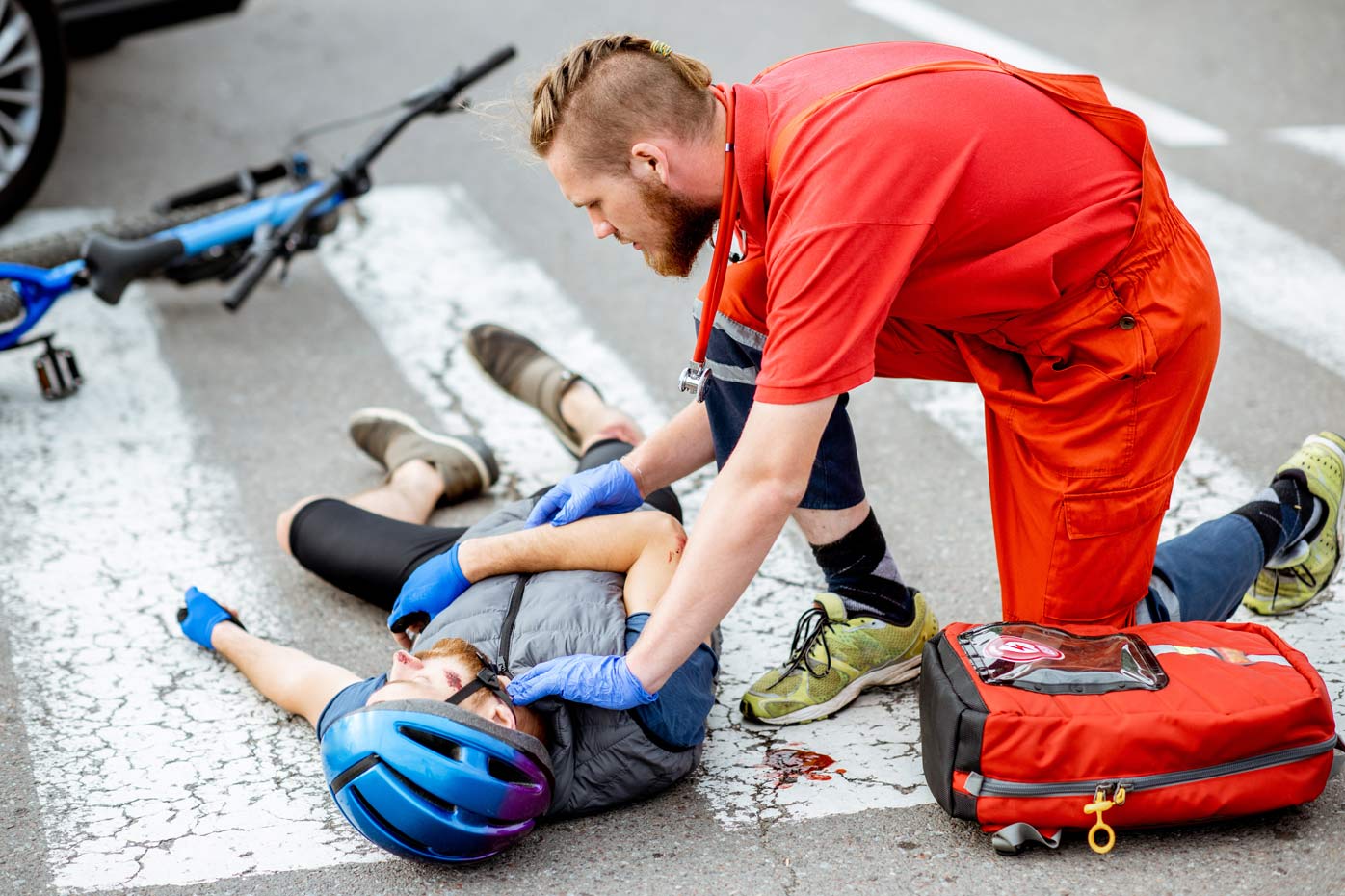Our family takeaway from this experience is that bike racing is over. Eric says that the broken bones alone probably would not have been enough to dissuade him from racing, but the experience with his lung was very convincing. He is going to find a safer way to satisfy his middle-age need for speed and competitive exercise.
This whole experience led me to wonder about the safety of cycling and any statistics available about accidents and injuries. Anecdotally, being part of the cycling community, we know several people who have had serious accidents, but my perspective is biased by the large number of cyclists I know. Therefore, I did some research, with underwriting in mind, to look for available data and studies about cycling and risk for serious accidents, injuries, and mortality. I wondered if my perception of cycling risk was accurate and if the positive benefits for physical fitness might balance any of these risks.
Examining the data
As it turns out, there are an estimated 130,000 injuries and 1,000 bicycle rider deaths each year in the United States,[1] with over 50 million people (ages 6 and older) participating in bicycling in 2020 and 2021.[2] The overall percent of the U.S. population (ages 16 and older) who rode at least once a week was relatively modest in 2022 at 25%, compared to the highest cycling countries: India (67%), China (66%), and the Netherlands (65%),[3] however, participation in cycling grew over the last decade by almost 10 million riders.[4]
The number of cycling-related fatalities has also risen over the last decade. National Highway Traffic Safety Administration (NHTSA) data shows there was a 5% increase in fatal bicycle crashes between 2012-2016 and 2017-2021, with 2.7 fatal crashes per million U.S. residents.[5] Urban areas saw a 62% increase in fatalities since 2012 while the rate decreased by 38% in rural areas. Cycling fatalities occurred in every state in 2021, with the top five being Florida, California, Texas, New York, and Arizona.[5] The League of American Bicyclists, using NHTSA data, found that the U.S. cities with the highest rates of fatal crashes 2017-2021 were New Orleans (9.9/M) and Tucson (8.9/M).[6]
Vehicle-cyclist crashes are a common source of cyclist fatalities, with 2% of motor vehicle crash deaths involving a bicyclist. Data from the U.S. Department of Transportation’s Fatality Analysis Reporting System shows that since 1975, the overall rate of vehicle-cyclist fatalities has decreased by 4%, but this has not occurred equally across demographic groups. The rate has declined by 90% in cyclists under 20 years old while it has increased four times in riders 20 years and older. In every year, male cyclists have been more likely to experience a vehicle-related fatality, with males 20 years and older seeing the largest increase in rate.[7] In 2021, the most recent year of available data, 61% of those killed were not wearing a helmet.
Compared to other sports and recreational activities in the U.S., bicycling leads to the highest number of recreation-related emergency department (ED) visits for traumatic brain injury (TBI).
In a CDC report using data from the National Electronic Injury Surveillance System-All Injury Program, between 2009-2018 more than 596,000 ED visits were reported for bicycle-related TBIs. Rates were highest in adult males and in children ages 10-14 years. The overall rates per 100,000 population decreased by 27% during the study period, with the rate decreasing 48% in children but only 5.5% in adults.[8] A study from The Netherlands[9] characterized bicycling accident outcomes by examining data from all patients admitted to a level-1 trauma center following a bicycling accident from 2007-2017. They reported 1,986 accidents, 83% associated with regular bicycles (not due to racing, off-roading, or e-bikes). Riders were 61% male, and 92.5% were not wearing helmets. They suffered multiple injuries in 41% of cases, and the mortality rate was 5.7%.
The health benefits of cycling
While there are risks associated with cycling, there are also health benefits. We reviewed a meta-analysis of 187,000 individuals (mostly European) and 2.1 million person years looking at exposure to cycling 11.25 MET.hours per week (intensity of 4.5 METs for 2.5 hours per week; METS = metabolic equivalents where one MET is the resting oxygen uptake when sitting and walking up a hill is equivalent to 4 METs). Investigators found a risk reduction of 0.90 (95%CI 0.87-0.94) in all-cause mortality, which is a 10% decrease in risk. This is comparable to the risk reduction achieved from 11.25 MET.hours per week of walking.[10] Similar risk reduction was found in a large English study[11] of 22,000 middle-age and older individuals followed for over a decade. They reported their physical activity and completed a health assessment. Cycling at least 60 minutes per week was associated with a 9% reduction in all-cause mortality. Finally, in a study from the U.K. biobank[12] looking at active commuting in 263,000 middle-aged adults, researchers found that commuting by cycling was associated with decreased risk of all-cause mortality (HR=0.59, 95%CI 0.42-0.83). It was also associated with decreased risk of cancer mortality (HR=0.60, 95%CI 0.40-0.90) and CVD mortality (HR-0.48, 95%CI 0.25-0.92).
Cycling can be a source of physical fitness and is associated with evidence of decreased all-cause mortality, however, it is not without risk. To put the rate of cycling fatalities due to motor vehicles into perspective, in 2022, there were 2.2 pedestrian deaths per 100,000 people in the U.S. (22 per million residents)[13] versus the rate of 2.7 per million U.S. residents for bicyclists.5 However, there were many more people walking and running than cycling, so it is hard to compare directly.
Reducing risk
There are several actions cyclists can take to decrease their risk of morbidity and mortality. Using designated cycling tracks is associated with reduced risk of injury compared to cycling on streets shared with motor vehicles.[14] Helmet use can also decrease the risk of fatal and nonfatal head injuries, which is one of the major causes of mortality.[15][16] In underwriting, physical fitness is a positive attribute, and cycling is one way to achieve fitness and reduction of risk for mortality. However, underwriters need to look for evidence of risky cycling behavior when evaluating these applicants. Looking for history of previous accidents, especially multiple previous accidents, and for helmet use may be one way to determine if the applicant is taking more risks than average. Additionally, multiple ED visits for other injuries, history of TBI, and other avocations associated with risk (rock climbing, SCUBA diving, vehicle racing, etc.) may also indicate risk-taking behavior.
At RGA, we are eager to engage with clients to better understand and tackle the industry’s most pressing challenges together. Contact us to discuss and to learn more about RGA's capabilities, resources, and solutions.




